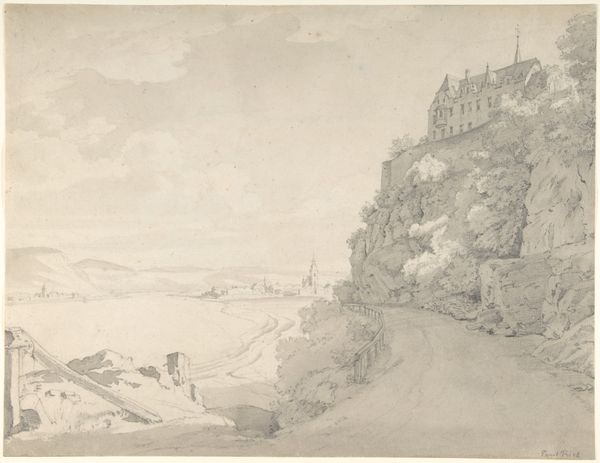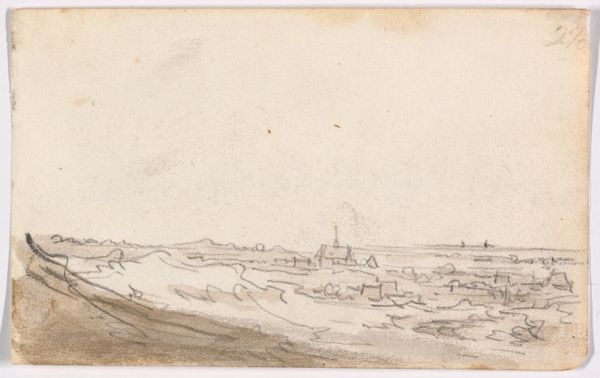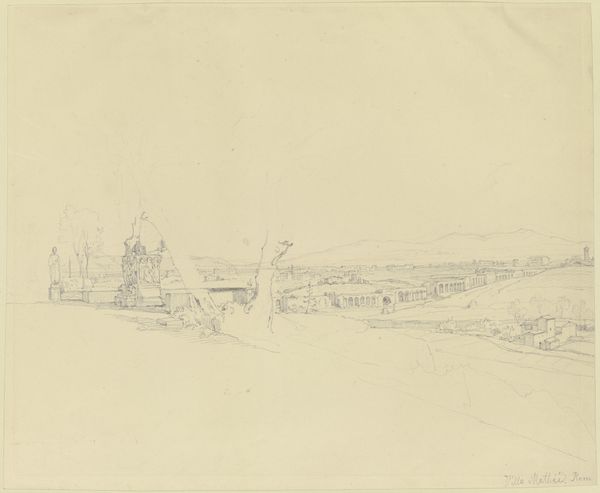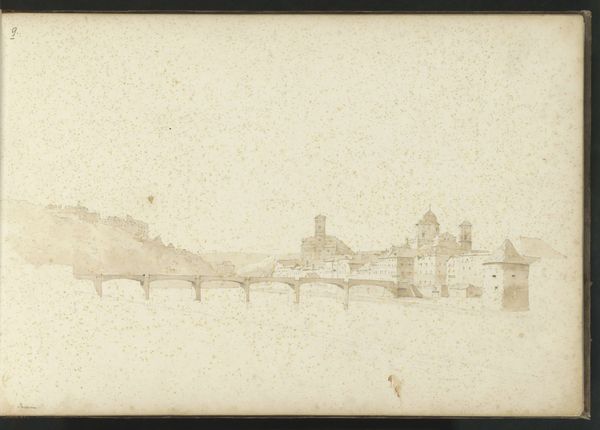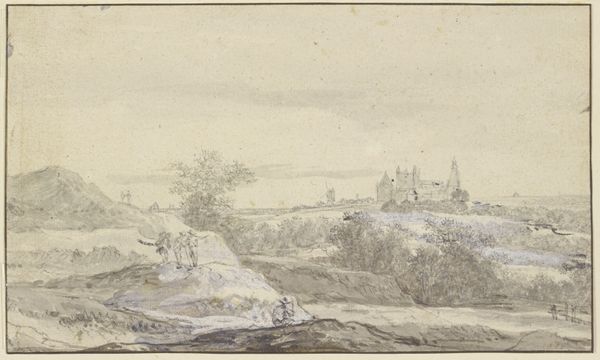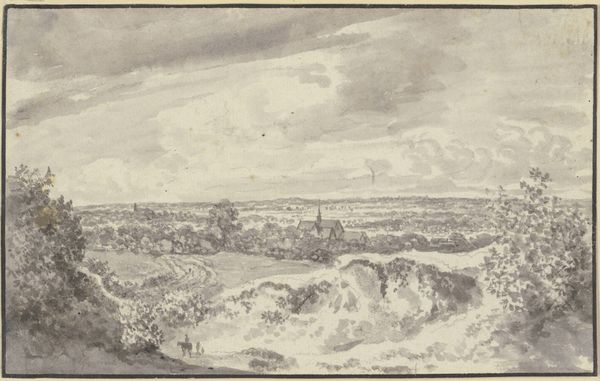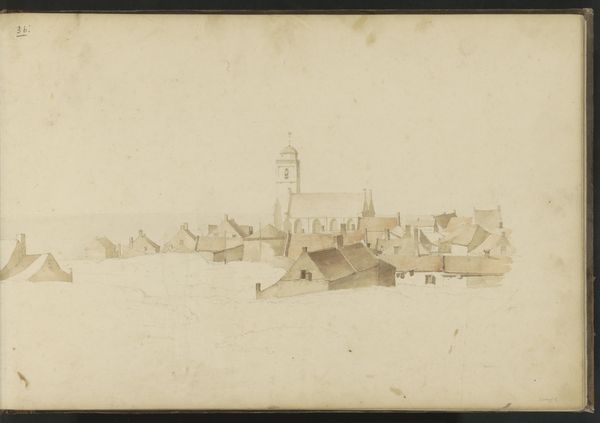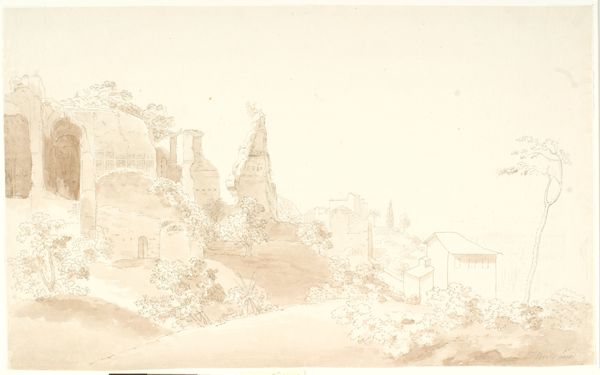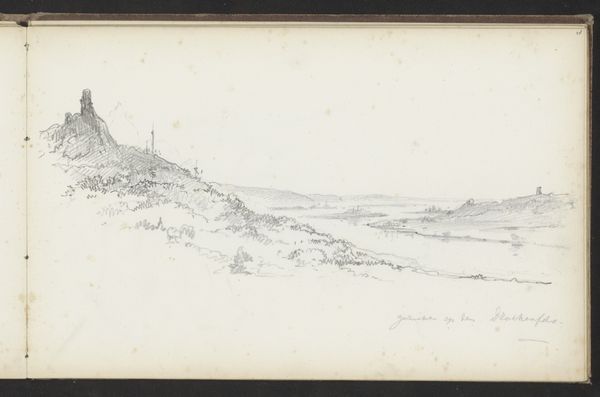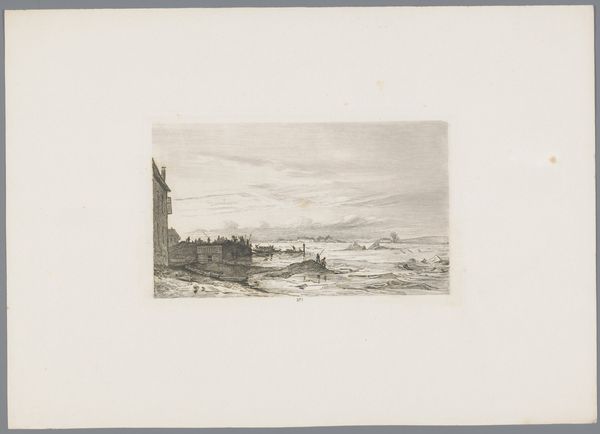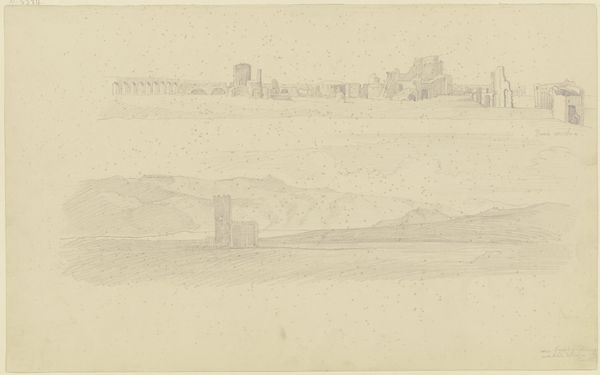
Copyright: Rijks Museum: Open Domain
Curator: Let's delve into this fascinating cityscape by Kasparus Karsen. It’s entitled "View of Heidelberg from Heidelberg Castle," and was likely produced sometime between 1820 and 1896. He used watercolor to create it. Editor: My first impression is…ghostly. There's a lightness, almost a faded quality. The castle looms, yes, but everything else seems to be emerging from a mist. Is that intended, I wonder? Curator: Given Karsen's interest in plein-air painting, the atmospheric perspective seems deliberate. It suggests he captured a particular moment, maybe early morning, emphasizing the ephemeral nature of observation, the atmospheric conditions he observed and worked within. Notice the specific application of watercolour paint, to convey a feeling of topographical vastness with immediacy. Editor: So, he’s thinking about the workaday aspects of painting as well as aesthetic goals, I imagine. The application here isn't striving for precise realism, despite the clear architectural forms; more of a feeling, almost dreamlike in rendering this vista. Did the conditions in Heidelberg contribute, or was the choice made with more economic concerns such as expediency of using local materials and techniques at the time? Curator: Absolutely, a study of local material culture shows it must have. Watercolour itself allowed for quick, on-location work, very appealing to a romantic artist trying to capture transient light or weather effects and to efficiently represent Heidelberg from a singular perspective. Romanticism, too, idealized nature and the sublime. This view from the castle gives the observer an experience of that very sensation. One might consider how painting related to processes around other labour, even printing and topographical imagery which used similar techniques at that time. Editor: And speaking of labor, think of Karsen setting up his easel, mixing paints. We're standing where he once stood, centuries ago. Though this could have been produced rapidly, what of the more painstaking and hidden production and transport? Curator: Well put. We see only the resulting artefact, but consider the journey and effort, to represent Heidelberg, using its labour. It reminds us art isn't divorced from daily practicalities, and the conditions and materials within which it is embedded. Editor: In essence, viewing is always interwoven in our awareness, and of wider considerations. Even in something as deceptively simple as a watercolour of a cityscape.
Comments
No comments
Be the first to comment and join the conversation on the ultimate creative platform.
